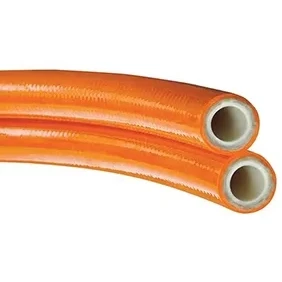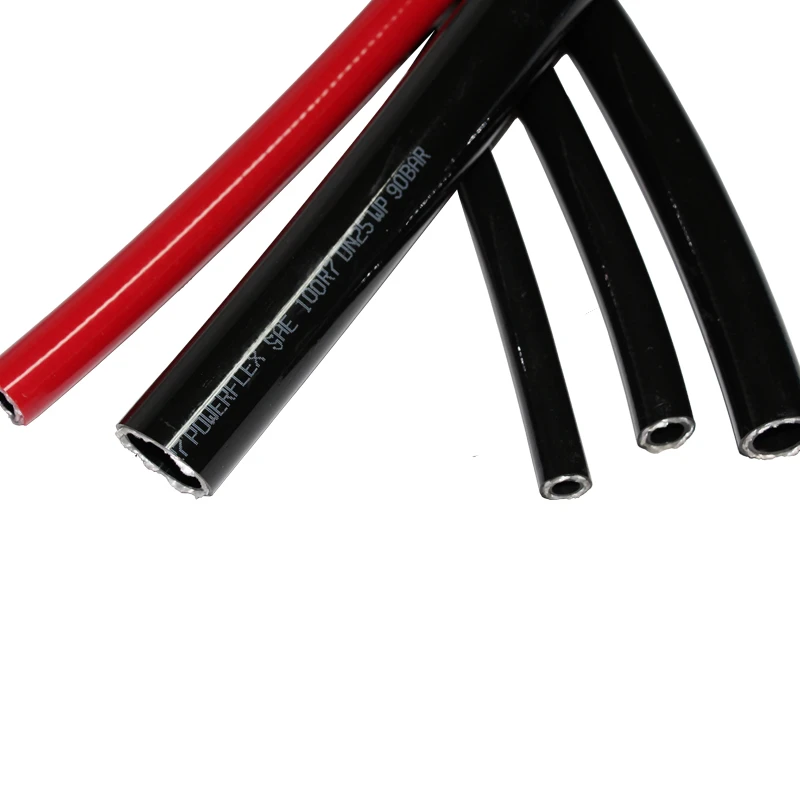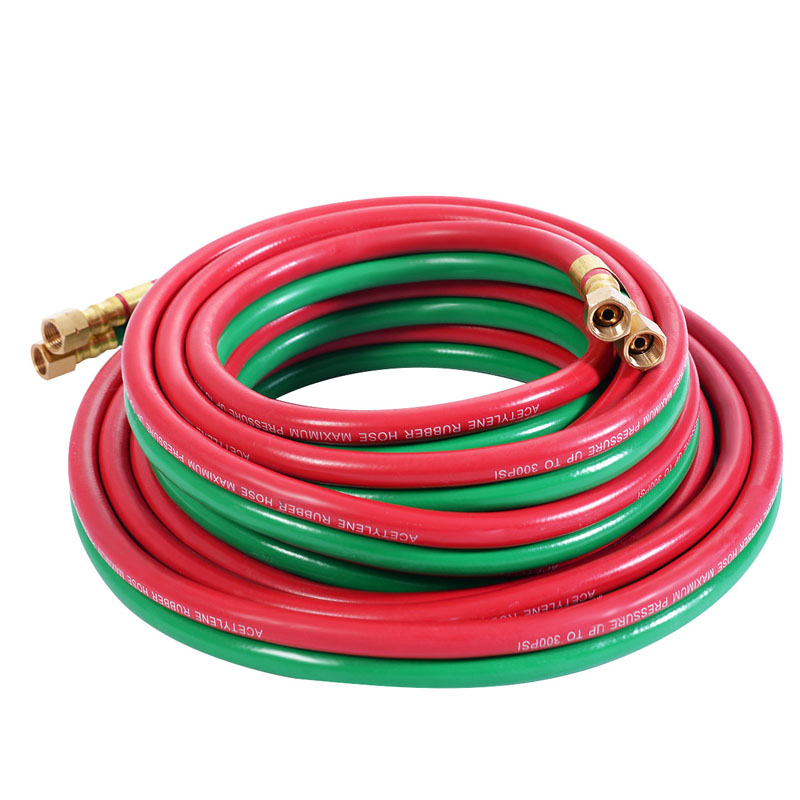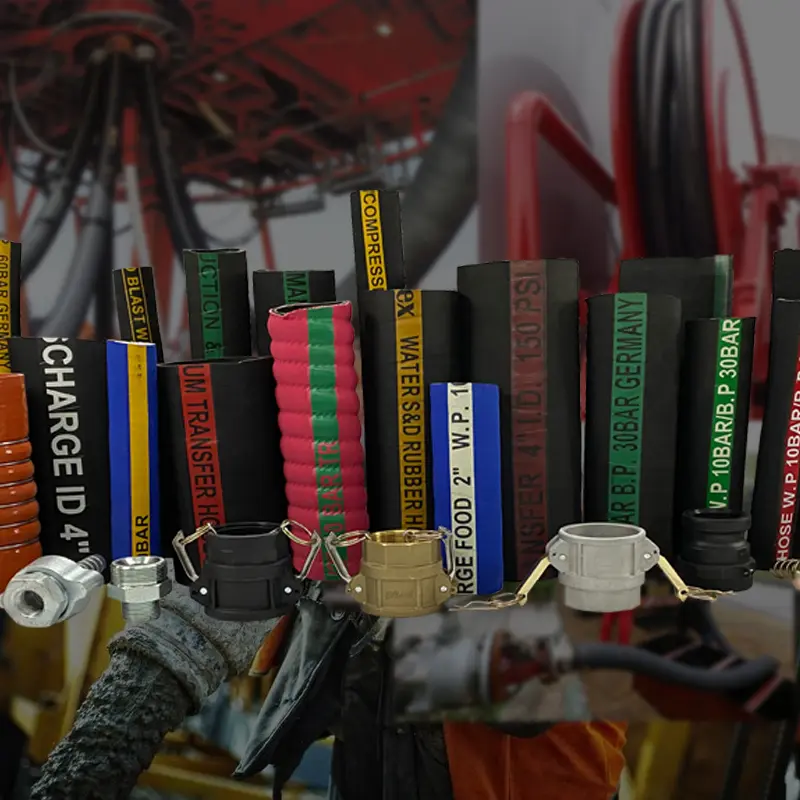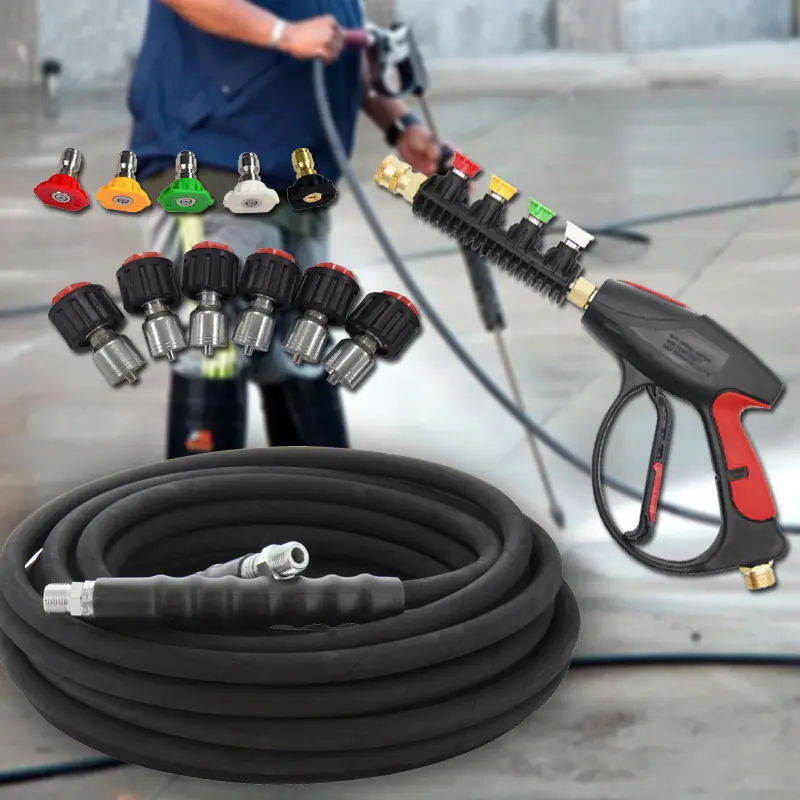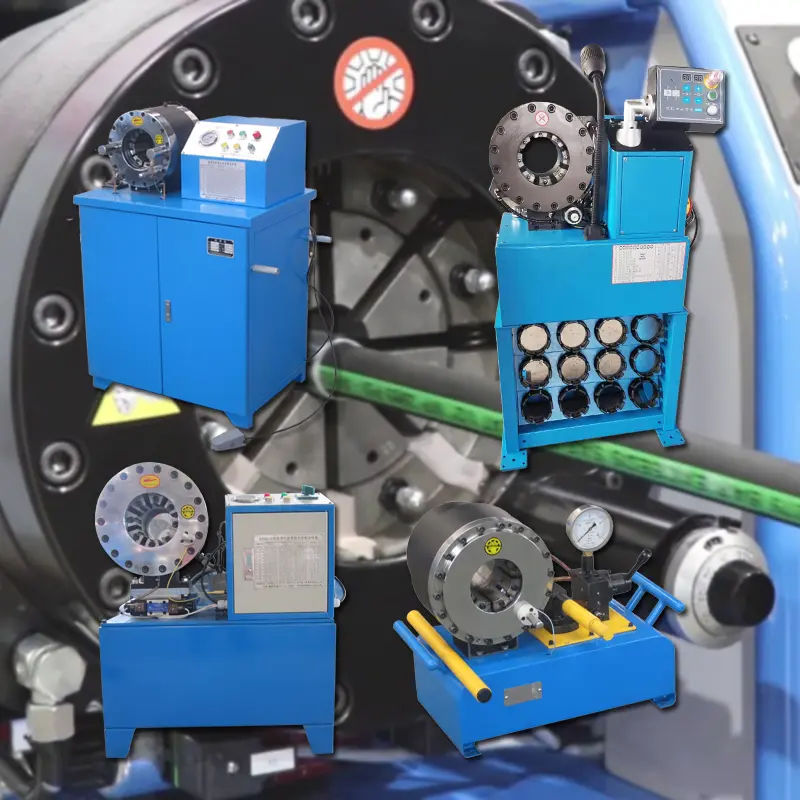In the dynamic world of construction, where precision and durability are non-negotiable, the concrete pump hose stands as a critical link between concrete pumps and pouring sites. More than just a flexible tube, it is a engineered solution designed to handle the abrasive, high-pressure flow of concrete, mortar, and grout. As a trusted concrete pumping hose supplier, SINOPULSE demystifies the nuances of these essential components—from their core characteristics to selection strategies—empowering professionals to choose hoses that elevate project efficiency and safety.
What Is a Concrete Pump Hose?
A concrete pump hose is a heavy-duty, reinforced hose specifically crafted to transfer fresh concrete from pumps to formworks or placement areas. Unlike standard industrial hoses, its design prioritizes resistance to abrasion (from sand, gravel, and aggregate) and the ability to withstand high pumping pressures. Typically constructed with a synthetic rubber inner tube (resistant to concrete’s alkaline nature), multiple layers of steel wire reinforcement (for pressure tolerance), and an outer cover (abrasion-resistant and weatherproof), these hoses balance flexibility with structural integrity—critical for navigating tight spaces on construction sites.
Often referred to as a concrete delivery hose , it acts as the final "arm" of the pumping system, ensuring a steady, controlled flow that prevents blockages and ensures uniform concrete placement.
Key Characteristics and Performance Requirements of Concrete Pump Hose
The demanding nature of concrete pumping dictates strict performance standards for concrete pump hose designs:
- Abrasion Resistance: The inner tube must withstand constant friction from aggregate particles. Premium hoses (like SINOPULSE’s CP Series) use specialized rubber compounds infused with polyurethane or ceramic particles, extending service life by 30% compared to standard models.
- Pressure Tolerance:Designed to handle pumping pressures greater than 80 bar (1,160 psi) , withstanding sudden surges common when pushing concrete through long horizontal or vertical runs.
- Flexibility: Must bend easily (minimum bend radius of 1.5x the hose diameter) to reach confined areas—such as between rebar or inside building cores—without kinking or restricting flow.
- Weather Resistance: The outer cover resists UV rays, ozone, and temperature extremes (-30°C to +80°C), ensuring reliability in outdoor projects across seasons.
- Length Versatility: Available in 1m to 6m sections, with quick-connect couplings for easy on-site assembly, reducing downtime during hose replacements.
Applications: Where Concrete Pump Hoses Excel
The concrete pump hose is indispensable across diverse construction scenarios:
- High-Rise Construction: Vertical pumping to upper floors relies on rigid yet flexible hoses to navigate elevator shafts and scaffolding, ensuring concrete reaches formworks without segregation.
- Bridge and Infrastructure Projects: Long-distance horizontal pumping (up to 200m) demands hoses with minimal pressure drop, such as SINOPULSE’s high-performance concrete delivery hose.
- Residential and Commercial Slabs: Manoeuvrable short-length hoses (2–3m) facilitate precise placement for floor slabs, foundations, and driveways.
- Tunnel and Mining Work: Abrasion-resistant hoses withstand the harsh conditions of underground projects, where dust and confined spaces accelerate wear.
In each application, the concrete pump hose must adapt to project-specific demands—whether handling high-slump concrete for flowable fills or stiff mixes for structural elements.
How to Choose the Right Concrete Pump Hose
Selecting the ideal concrete pump hose requires matching its specifications to project needs. Here’s a step-by-step guide:
- Assess Project Scale: Small residential jobs may use 2–3 inch diameter hoses (handling 30–50m³/h flow), while large infrastructure projects require 4–6 inch hoses (80–150m³/h) for high-volume pumping.
- Evaluate Pressure Requirements: High-rise or long-distance pumping demands hoses rated for 60–80 bar; low-rise projects can use 30–50 bar models.
- Prioritize Abrasion Resistance: For harsh mixes (e.g., high aggregate content), choose hoses with reinforced inner tubes—ask your concrete pumping hose supplierfor wear-test data.
- Check Coupling Compatibility: Ensure hose fittings match your pump’s outlet (threaded, flanged, or quick-release) to avoid leaks and pressure loss.
- Consider Temperature and Environment: Cold-weather projects need hoses with low-temperature flexibility, while desert or coastal sites require UV and salt resistance.
SINOPULSE: Your Trusted Concrete Pumping Hose Supplier
As a leading concrete pumping hose supplier , SINOPULSE’s concrete pump hose for sale combines innovation and durability. Our CP Series hoses undergo rigorous testing—including 10,000+ cycles of abrasion testing and pressure spike simulations—to ensure they outperform industry standards.
We offer tailored solutions, from custom lengths to specialized compounds for extreme environments, backed by technical support to help you select the right hose for your project. With SINOPULSE, you gain more than a concrete delivery hose—you gain a partner committed to keeping your concrete flowing smoothly, safely, and efficiently.
Explore our concrete pump hose for sale today and experience the difference that engineering excellence makes in your construction projects.

Product Application











